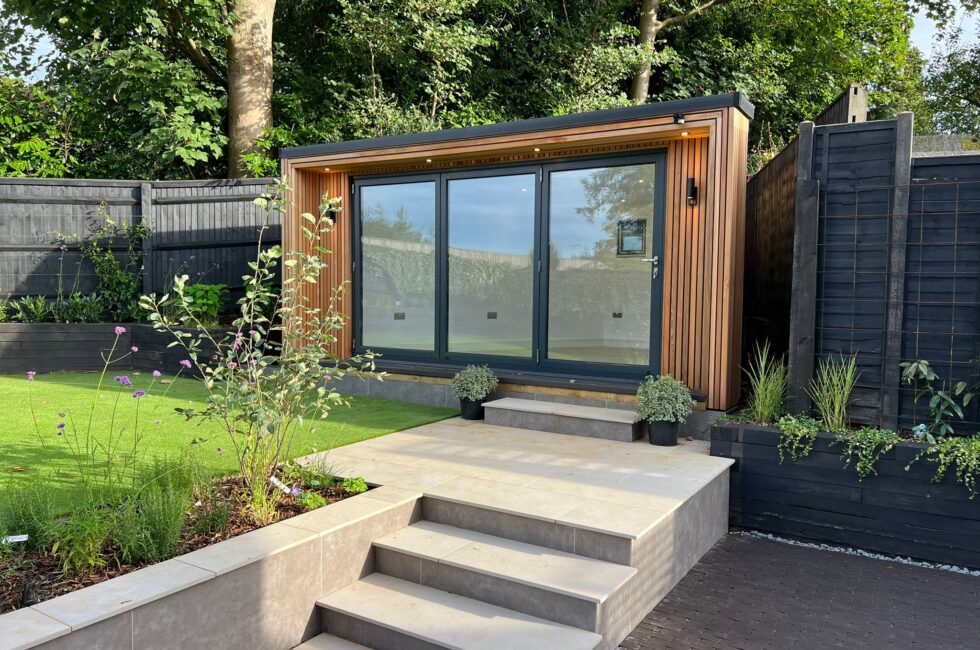Good News On Planning Permission For Garden Sheds
Wiki Article
What Type Of Planning Permit Will You Need To Get In Order To Build A Garden Room, For Example, In Order To Address Highway Issues?
If you are planning to construct gardens, conservatories, outhouses, garden offices or extensions, highways concerns are a significant factor that may impact the need for planning permission. Here are the main concerns: Visibility and Sight Lines
Planning permits are required if a new structure hinders the view of drivers coming into and leaving the building. It can also alter sight lines at junctions and bends. The planning authority will assess whether the building poses a risk to road safety.
Access to Highway
Planning permission is generally required for structures constructed near the highway. For example, front garden rooms, extensions on the street or even extensions within the street. The distance requirements are very strict. requirements to ensure that the structure won't interfere with road traffic.
Access and Egress
Planning permission might be needed in the event that you wish to modify or create new access points. It is crucial to make sure that all exits and access points are secure and do not interfere with traffic flow.
Parking Facilities
If the new structure impacts existing parking spaces or requires additional parking, planning permission is necessary. The planning authority determines whether or not the proposed development has enough parking and also if it doesn't create parking congestion on streets.
Traffic Generation
Planning permits are necessary for any project expected to generate traffic like garden offices, for instance, where clients visit. Assessments will be made of the effects on traffic flow and security.
Impact on Pedestrian Access
Planning permits are required if your proposed construction will be encroaching on pavements or pedestrian pathways. It is crucial to ensure that pedestrians are able to be able to access the area while remaining secure.
Construction Impact on Highways
It is possible to get planning permission when construction activities impact on the highways. This could include the movement of heavy trucks as well as temporary obstructions. Authorities for planning may establish conditions to limit interruptions to the roads network.
Drainage and runoff from water
The development's impact on drainage and water runoff, and specifically how it impacts the highway, is another consideration. Planning approval is needed to ensure that any construction will not cause further flooding or drainage problems which could affect the road.
Street Furniture and Utilities
Planning permission is necessary if the project has an impact on the street furniture or underground utilities. To address these issues the planning authority must collaborate with other appropriate agencies.
Highway Authority Guidelines for Compliance:
The local highway authority might have specific rules and guidelines regarding developments close to highways. Planning permission ensures compliance of these regulations to ensure road safety and efficiency.
Noise and Disturbance caused due to traffic
Permission to plan is required if the new structure will cause more disturbance and noise to traffic (e.g. an office in the garden which receives visitors or deliveries).
Accessibility to public transport
The development that will impact accessibility to public transportation facilities, such as trains or bus stops, need planning permission. The impact on passengers of public transport, and integration with the transportation system is taken into account.
The impact of highways is a crucial aspect in determining if a garden room, conservatory or outhouse, garden office, or extension is approved. To ensure that the proposed development doesn't negatively affect traffic safety, road safety, pedestrians access, or the overall infrastructure, be sure to verify this. Consulting with your local authority for planning as well as the highway authority at the beginning of the process of planning can assist in addressing these issues and ensure compliance with all applicable regulations. See the top how big can i build a garden room without planning permission for blog tips including copyright outhouse, garden outhouse, garden rooms in St Albans, ground screws vs concrete base, copyright garden room, outhouse uk, insulated garden rooms, Tring garden rooms, best electric heater for cabin, garden rooms and more.

What Planning Permission Are You Required To Get For Garden Rooms Etc In Regards To Height Restrictions?
The size of the garden rooms and conservatories as well as outhouses, office buildings or extensions will determine if or not a planning permit is required. Here are the most important height-related considerations to keep in your head:
The maximum height for a detached outbuilding or extension should not exceed 4 meters when it is a dual-pitched roof (such as the gable roof).
If you have a different type of roof (flat, single-pitched, etc. ) The height of the roof must not exceed 3 meters.
Proximity to boundaries:
The maximum height for a structure within 2 metres of the property line is not to exceed 2.5 meters. This applies to garages, sheds, as well as similar structures.
The Eaves' Height
The maximum height of the eaves (the height between the lowest part of the roof and eaves) must not exceed 2.5 meters for any building.
Conservatories or Extensions
For a single-story rear extension, the maximum height should not exceed 4 meters. This includes the parapet wall and roof.
Side Extensions
Side extensions are limited to a height of 4 meters. They can't be any higher than the house that was originally built.
Special Roofs
The roofs of structures with a flat surface are generally limited to a maximum of 3 meters.
Additional Restrictions to designated areas
In areas of Outstanding Natural Beauty, conservation areas and other zones that are designated, there might be stricter height restrictions and permits for construction that normally fall within allowed development rights.
Constructions in National Parks
National Parks, like designated areas, may have additional height limitations which require approval for planning.
Design for the Roof
The height of the highest point of roof (excluding chimneys and antennas) It is important to consider the height. Planning permission could be required if a building's highest elevation of the structure is higher than the allowed building limits.
Neighbours are affected as well.
Even if the structure is within the height limits that are permitted, planning permission may still be required if the structure significantly affects privacy, light or view of neighbouring properties.
Maximum Overall Height:
The maximum height of any building is 4 meters. In this case, the highest point of a garden-office that has a dual pitched roof can not exceed 4 meters.
Decking or Platforms
Decking and platforms attached to the structure cannot elevate the level of the ground to more than 0.3 millimeters to avoid the need for permission for planning.
Always visit the website of your local planning authority to see any new rules or changes. Even if a development is within the allowed development rights, local variations or specific property conditions may necessitate obtaining planning permission. Follow the most popular planning permission for garden room for site advice including outhouses for garden, outhouse for garden, garden rooms near me, myouthouse, garden room permitted development, garden rooms in St Albans, garden rooms, garden rooms brookmans park, what size garden room without planning permission, gym outhouse and more.

What Type Of Permits Are You Looking For To Build Gardens Or Other Structures That Are Located On Agricultural Land?
Planning permissions and restrictions apply for the building of conservatories, garden rooms or outhouses on agricultural land. Here are a few key factors.
Agricultural land is typically reserved for agriculture and other related activities. Its use for gardens or residential uses requires planning permission. This is because it involves shifting the land from its original agricultural use.
Permitted Development Rights:
The land used for agriculture is generally different development rights than residential land. Certain types of agricultural structures are able to be built with no planning approval, however it is typically only for farms and not for gardens for residential homes or offices.
Size and Scale
The size and scale of the structure proposed may affect whether a planning permit is needed. Buildings that are larger or cover a large area of space are more likely to need planning permission.
The impact on the use of agriculture:
Planning permission is more likely to be required when the proposed structure is incompatible with the agricultural use of the land such as reducing the area that can be used for livestock or crops.
Green Belt Land:
If the land for agriculture is designated as Green Belt, there are additional restrictions that aim to prevent urban sprawl and preserving open space. Typically, any building on Green Belt property requires planning approval and must satisfy specific requirements.
Design and Appearance
The style and design of the new structure must be consistent with the rural nature of the surrounding area. The permission for planning will guarantee that the building doesn't impact the natural landscape or visual amenity.
Environmental Impact:
Environmental impact is a consideration for any development on land that is agricultural. A study of the environment may be required in order to get planning approval to ensure that any new construction will not affect wildlife habitats and ecosystems in the area.
Distance from structures
The closeness of the office or garden space to agricultural structures in the area could influence the planning requirements. Structures built close to farms that are already in use could be seen differently than those situated in open fields.
Access and Infrastructure:
Consideration should be given to the effect of the proposed building on existing infrastructure like roads, waste management, and water supply. Planning permission will determine whether or not the existing infrastructure can support the construction.
Class order:
Agricultural land is part of specific use classes that are defined by planning laws. It is common to need planning permission in order to change the land's classification to allow non-agricultural uses.
Local Planning Policies:
Local authorities for planning have policies that are specific for agricultural land. These policies determine whether or not planning approval for non-agricultural buildings is granted in accordance with the local development plans as well as the needs of the community into account.
National Planning Policy Framework
The National Planning Policy Framework in the UK provides guidelines for how land development should take place and how it should be utilized. The NPPF is used to evaluate the use of planning permissions for structures that are built on agricultural lands. It emphasizes the sustainable growth of rural areas and also protects them.
Generally speaking, the permission to construct extensions, gardens, or conservatories on agricultural land is required due to the need to alter its use, and also to ensure compliance with the federal and local planning regulations. To find out the exact requirements and to obtain the necessary approvals, it is essential that you consult the local planning authorities. See the top rated main electric cable to house uk for site tips including conservatories and garden rooms, garden outhouse, garden office hertfordshire, outhouse, outhouse buildings, what is a garden room, what size garden room without planning permission, out house for garden, garden room, outhouse uk and more.
